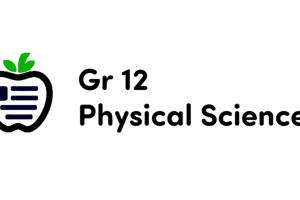Podcast
Questions and Answers
What is the primary effect of an applied force on an object?
What is the primary effect of an applied force on an object?
- It always causes the object to move away from the force.
- It prevents the object from changing direction.
- It can change the state of rest or motion of the object. (correct)
- It always increases the object's size.
Which of the following is NOT a type of contact force?
Which of the following is NOT a type of contact force?
- Air resistance
- Tension force
- Frictional force
- Magnetic force (correct)
In a free-body diagram, what does the size of the vector arrows represent?
In a free-body diagram, what does the size of the vector arrows represent?
- The magnitude of the forces (correct)
- The duration of the forces
- The direction of the object's motion
- The type of forces acting
How is net force calculated when two forces act on an object in opposite directions?
How is net force calculated when two forces act on an object in opposite directions?
Which of the following statements is true about vector forces?
Which of the following statements is true about vector forces?
What does a net force of zero indicate about an object's motion?
What does a net force of zero indicate about an object's motion?
Which of the following best defines inertia?
Which of the following best defines inertia?
How is force quantified in the International System of Units (SI)?
How is force quantified in the International System of Units (SI)?
Which statement regarding balanced and unbalanced forces is true?
Which statement regarding balanced and unbalanced forces is true?
According to Newton's second law, what relationship does mass have with acceleration?
According to Newton's second law, what relationship does mass have with acceleration?
What does Newton’s third law of motion state about action and reaction forces?
What does Newton’s third law of motion state about action and reaction forces?
How can momentum be defined mathematically?
How can momentum be defined mathematically?
What is the principle that describes the buoyant force experienced by an object submerged in a fluid?
What is the principle that describes the buoyant force experienced by an object submerged in a fluid?
How is density calculated?
How is density calculated?
What happens to an object if its density is less than the density of the fluid it is in?
What happens to an object if its density is less than the density of the fluid it is in?
What is an example of potential energy?
What is an example of potential energy?
Which of the following statements about mass and volume is true?
Which of the following statements about mass and volume is true?
What is the relationship between impulse and momentum described in the impulse-momentum theorem?
What is the relationship between impulse and momentum described in the impulse-momentum theorem?
What is the standard SI unit for measuring weight?
What is the standard SI unit for measuring weight?
How is weight calculated from mass and gravitational force?
How is weight calculated from mass and gravitational force?
Why is understanding the difference between mass and weight essential?
Why is understanding the difference between mass and weight essential?
What happens to the weight of an object as the distance from Earth increases?
What happens to the weight of an object as the distance from Earth increases?
What defines the volume of a rectangular prism?
What defines the volume of a rectangular prism?
What is the gravitational acceleration on Mars compared to Earth?
What is the gravitational acceleration on Mars compared to Earth?
What effect does increasing the time duration of an applied force have on an object's landing?
What effect does increasing the time duration of an applied force have on an object's landing?
During unit conversion from kilograms to grams, what is the mathematical operation applied?
During unit conversion from kilograms to grams, what is the mathematical operation applied?
Which statement best describes mass?
Which statement best describes mass?
Flashcards are hidden until you start studying
Study Notes
Forces and Motion
- A force can be described as a push or pull on an object, influencing its state of motion, direction, or shape.
- Applied forces can be categorized into contact forces (e.g., friction, tension) and non-contact forces (e.g., gravity, magnetic).
- Forces are vector quantities, involving both magnitude and direction; multiple forces on an object can be combined to find resultant forces.
- Free-body diagrams visually represent forces acting on an object, helping to analyze their effects.
Newton's Laws of Motion
- Newton's first law (law of inertia): An object remains at rest or in uniform motion unless acted upon by an unbalanced force.
- Newton's second law: Force equals mass times acceleration (F = m * a). Objects with larger mass require more force for acceleration.
- Newton's third law: Every action has an equal and opposite reaction. Forces occur in pairs acting on different objects.
Weight and Mass
- Weight is a vector force due to gravity, varying with gravitational pull; mass is a scalar quantity that remains constant regardless of location.
- SI unit of force is the Newton (N); weight formula: Weight = mass × gravitational force.
- Weight on the Moon is one-sixth of weight on Earth due to lower gravitational force.
Momentum and Impulse
- Momentum is defined as mass times velocity (p = m * v); impulse is the change in momentum.
- The impulse-momentum theorem states that impulse applied equals change in momentum; SI unit of impulse is Newton-second (Ns).
- Using the impulse-momentum theorem helps in understanding safety features like airbags.
Density and Buoyancy
- Density measures how compact a substance is (density = mass/volume) and influences whether objects float or sink.
- Archie’s Principle states that the buoyant force is equal to the weight of the displaced fluid.
- Objects with densities greater than the fluid sink; those with lower densities float.
Energy
- Energy facilitates the performance of work and exists as either kinetic (motion-based) or potential (stored) energy.
- Kinetic energy equation: KE = 1/2 * m * v², illustrating the significance of velocity in kinetic energy.
Measurement Units and Conversions
- Recognizing mass and weight units is crucial; weight in the U.S. is measured in ounces, pounds, and tons, and mass in grams and kilograms.
- Conversion between units involves multiplication or division based on the direction of the conversion (e.g., grams to kilograms involves dividing by 1,000).
- Understanding measurements aids in solving problems involving mass and weight relationships.
Volume Calculation
- Volume of regular solids can be calculated using the formula: Volume = length × width × height.
- For irregular objects, the water displacement method is used to determine volume by measuring displaced water.
Application of Concepts
- Concepts like momentum, force, mass, and volume find practical applications in sports, vehicular safety, and various scientific fields.
- Understanding these fundamental principles allows for predictions and analyses of physical phenomena in everyday life.### Energy Transfer
- Energy transfer refers to the process of energy changing forms, which can occur through work or heat transfer.
- Types of energy include kinetic energy (energy of motion), potential energy (stored energy), electrical energy, and heat energy.
- During collisions (e.g., car accidents), kinetic energy moves from one vehicle to another, causing damage to both.
- Energy can convert between forms: a stationary object has potential energy that becomes kinetic energy when it moves, and a moving object stops converting kinetic energy back to potential energy.
- Heat transfer mechanisms include conduction (direct contact), convection (movement of fluid masses), and radiation (heat transfer through electromagnetic waves).
- Solar radiation is a prominent example of energy transfer.
States of Matter
- Three main states of matter: solid, liquid, and gas, which can change through thermal energy transfer.
- Adding thermal energy increases the speed and distance of particles, while removing thermal energy decreases their movement and brings them closer.
- Solids possess the least energy, while gases hold the most.
- State changes due to energy decrease include freezing, condensation, and deposition.
- State changes from energy addition include melting, evaporation, and sublimation.
- Water's evaporation/condensation point is 212°F (100°C); it becomes a gas above this temperature and a liquid below.
Heat Transfer
- Heat is defined as energy transfer from a higher temperature body to a lower temperature body, occurring only with a temperature difference.
- Heat transfer methods: conduction, convection, and radiation.
- Conduction requires direct contact and is most effective in solids due to tightly packed molecules facilitating kinetic energy transfer.
- Convection involves movement of fluid masses influenced by density differences; warmer, less dense fluids rise while cooler, denser fluids sink.
- Radiation transfers heat without requiring a medium, with transfer rates influenced by the body's color.
Studying That Suits You
Use AI to generate personalized quizzes and flashcards to suit your learning preferences.





